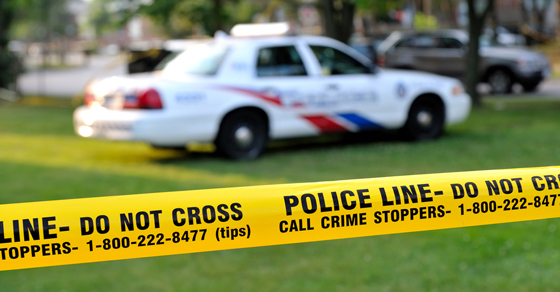Justice For Sammy? The Forcillo Verdict

The jury rendered an unusual verdict in the trial of police constable James Forcillo. But was it a just verdict?
It was.
Most people know the facts: Sammy Yatim, a troubled teenager, was killed on a streetcar by a volley of bullets fired by a Toronto police officer in the summer of 2013. The case, and the trial, transfixed the city and generated interest around the country.
Most of the facts are not in dispute.
Yatim was holding a knife and acting erratically, even dangerously, when the streetcar was abandoned by the driver and all the passengers. Police arrived immediately and Yatim, who was still inside the streetcar, was confronted at gunpoint and ordered to drop the knife. He mocked the officers and refused to obey. Cst. Forcillo then shot him three times. Yatim fell to the floor, mortally wounded. A he lay convulsing, Cst. Forcillo fired another six shots at him. Eight bullets struck Yatim, but he was killed by the first three. Yatim was shot within a minute of the arrival of police at the scene.
The public outcry concerned whether police should have exercised restraint and tried de-escalation techniques to deal with the situation, rather than using deadly force so quickly. Cst. Forcillo was charged with second degree murder (for the first three shots), as well as attempted murder (for the second six shots).
The legal issues were not really in dispute. Simply put, Forcillo killed Yatim, and had intended to kill him. The issue was whether he was justified in doing so, because he was acting (a) in self-defence (because Yatim posed a threat); or (b) under lawful authority (because he was a police officer).
The jury was faced with a stark choice on the murder charge. If they felt that the officer was justified in firing his gun, then he had to be found Not Guilty, period. There was no middle ground. As University of Alberta law professor Peter Sankoff explains in his helpful video blog (click here), there was no legal option for the jury to conclude that Forcillo did act in self-defence or pursuant to lawful authority, yet went too far by shooting so hastily, or by shooting nine times.
A complete exoneration would have sent the community the message that the officer’s conduct was fully justified. That would not have done justice.
A conviction for murder would have sent a message that was too extreme, because Cst. Forcillo was less morally culpable than most murderers who cause the death of another person. Murder carries severe stigma and penalties, because it is the most serious criminal offence in our society.
Instead, the jury came up with a verdict of attempted murder in relation to the second volley of six shots. Forcillo was not charged with murder in relation to that second volley, because Yatim was killed by the first volley. In rendering a verdict of attempted murder, however, the jury bridged the gap between the two extremes (complete guilt and complete exoneration), by saying in effect that the first round of shots was justifiable, but that the second round of shots was overkill. Cst. Forcillo was thus held accountable for going too far in exercising his authority.
While a bit strange, the verdict is actually an elegant one, because it addresses the public’s concerns about the lack of restraint and de-escalation by police, while acknowledging that the officer was confronted with a dangerous situation that was unfolding quickly. It makes common sense, and that is the beauty of it. The verdict delivers justice to Sammy Yatim, while showing mercy and deference to the difficult position that Cst. Forcillo found himself in.
This was a verdict that represents the best qualities of a jury: common sense, collective experience, and compassion. A compromise perhaps, but a good Canadian one that was made with goodwill and the best of intentions.
Disclaimer: please note that this blog contains information that may be of interest to the reader. It is not legal advice. For legal advice, you must retain a lawyer.
For further information concerning your particular situation, please contact The Defence Group at 416-363-1331. We are pleased to offer our clients a free consultation, reasonable and flexible fees, and experienced, knowledgeable service.

